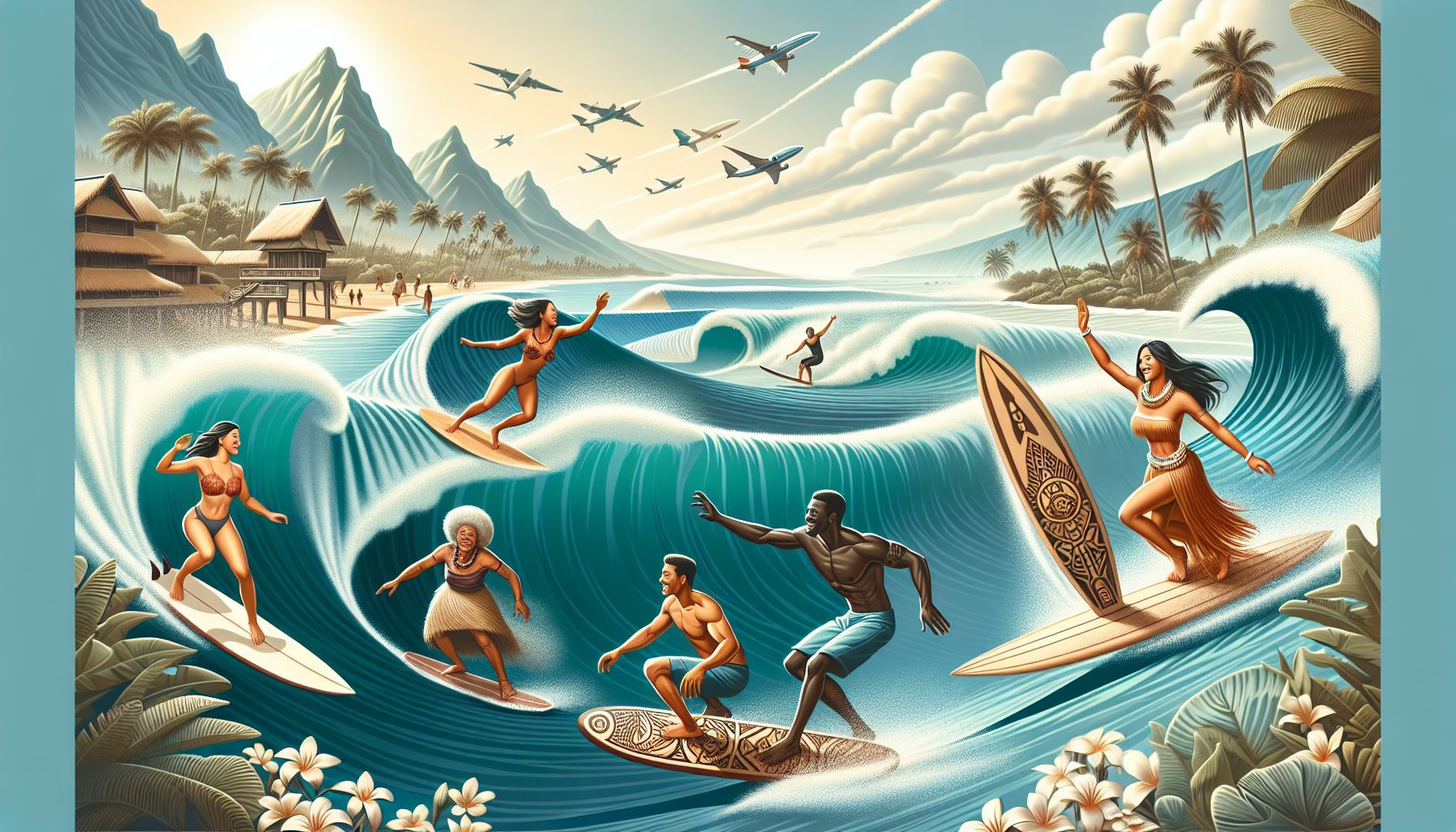Surfing is a sport that has captivated the hearts of millions around the world. Its unique blend of athleticism, artistry, and connection with nature makes it not only a popular recreational activity but also a way of life for many. From its ancient Polynesian roots to its modern-day status as a global phenomenon, surfing boasts a rich history and cultural significance that is as deep as the oceans it graces.
The Origins of Surfing
Surf rating’s origins can be traced back to the Polynesian islands, with the earliest recorded instances occurring in Tahiti and Hawaii. Ancient Polynesians regarded the ocean with great reverence and saw surfing as an intimate way to engage with the water’s power. It was an integral part of their culture, with societal hierarchy reflected in who had access to the best surf spots and boards, which were often reserved for royalty. In Hawaii, the term for surfing, “heʻenalu,” literally translates to wave-sliding, and the sport was deeply entwined with religious rituals and ceremonies.
The Revival of Surfing
As European influence grew in the Pacific, surfing began to decline. However, in the late 19th and early 20th centuries, the sport experienced a revitalization, thanks in part to figures like Duke Kahanamoku, known as the “father of modern surfing.” Kahanamoku, a Hawaiian Olympic swimming champion, showcased surfing to the world, igniting international interest. His passion for the sport led to the introduction of surfing to the Australian coast and eventually to the coastlines of California and beyond.
The Cultural Impact
Surfing’s modern evolution brought with it not only a sports revolution but also a profound cultural impact. Surf culture, with its music, fashion, and lingo, has permeated society and influenced generations of enthusiasts. From the Beach Boys’ harmonious tunes to the mounting of surfboards on vehicles as a symbol of a free-spirited lifestyle, the culture extends far beyond the ocean.
The 1960s brought the rise of surf movies, which heavily contributed to the popularity of the sport. Films like “The Endless Summer” presented the concept of searching for the perfect wave, introducing a larger audience to the beauty and excitement of surfing while perpetuating its emblematic connection to adventure and exploration.
Surfing Techniques and Equipment
As surfing gained popularity, so did advancements in techniques and equipment.
Surfboards
The surfboards of ancient Hawaii, called “ola,” were made from local woods like koa and were often heavy and hard to maneuver. Modern surfboards, however, use materials like fiberglass, foam, and resin, allowing for lighter and more agile designs. The shape and size of the board depend on factors like water conditions, wave height, and the rider’s experience level.
Surfing Style
The actual act of surfing involves paddling out into the ocean, positioning oneself to catch a wave, standing up on the board, and navigating the wave in a controlled descent. There are different styles of surfing, including longboarding, with larger boards suitable for slower, smooth rides, and shortboarding, which allows for quick turns and aerial maneuvers.
Maneuvers
Surfers employ an array of maneuvers to maximize their rides. The cutback returns the surfer to the wave’s power source when they’ve moved too far down the line, while the bottom turn sets up for most other maneuvers by transferring from the drop into a directional change. Advanced techniques include aerials, tubes, and 360-degree spins, testifying to the creativity and skill within the sport.
Health Benefits and Rispects
Surfing is not just thrilling; it offers numerous health benefits. It is a full-body workout that improves cardiovascular health, strength, flexibility, and stamina. The sport also carries mental health benefits, such as stress reduction and the therapeutic effect of being surrounded by nature. However, it demands respect for the ocean. Understanding water conditions, weather forecasts, and practicing water safety are critical.
Competitive Surfing and the Future
Competitive surfing has grown from informal local contests to a well-structured global circuit governed by the World Surf League (WSL). Surfing made its Olympic debut at the 2020 Tokyo Games, signifying its worldwide recognition and burgeoning interest.
Looking ahead, surfing continues to evolve with the development of artificial wave pools and advancements in sustainable surfboard manufacturing. Environmental consciousness is also integral to the sport’s future, as surfers often lead efforts in ocean conservation and awareness campaigns.
Conclusion
Surfing is a multifaceted sport that transcends simple recreation. Its rich history, cultural significance, and the sheer joy it brings to those who ride the waves contribute to its enduring appeal. As the sport continues to innovate and inspire, one thing remains constant: the elemental thrill of engaging with the power of the sea.
Sources
- “The History of Surfing” by Matt Warshaw – [ISBN: 978-0811856003]
- World Surf League – https://www.worldsurfleague.com/
- International Surfing Association – https://www.isasurf.org/
Whether you are drawn to the sport for its athletic challenge, the culture that surrounds it, or the connection to the natural world, surfing holds a special place in the hearts of many. One can hope that the future of surfing will continue to embrace its heritage while riding the wave of progression and innovation.
